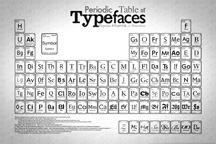 When is it time to consider a redesign of your company’s advertising material? Some may answer, “when its effectiveness drops,” or “when the competition does,” or “when we hire a new marketing director.” We agree that these are good reasons, but we also would add that periodic redesign should be part of your regular advertising cycle. A good redesign will refresh your ads and renew them for your loyal customers and your prospects alike.
When is it time to consider a redesign of your company’s advertising material? Some may answer, “when its effectiveness drops,” or “when the competition does,” or “when we hire a new marketing director.” We agree that these are good reasons, but we also would add that periodic redesign should be part of your regular advertising cycle. A good redesign will refresh your ads and renew them for your loyal customers and your prospects alike.
Signs That a Redesign May be Needed
Your company’s advertising material may need a redesign if any of these conditions exist:
- It has been more than five years since you first developed the advertising material.
- Your company today is much different than it was when the advertising material was developed.
- The target audience for your product or service has changed since the advertising material was developed.
Your advertising material may also show signs of aging in the selection of typeface, the layout, or the color palette.


